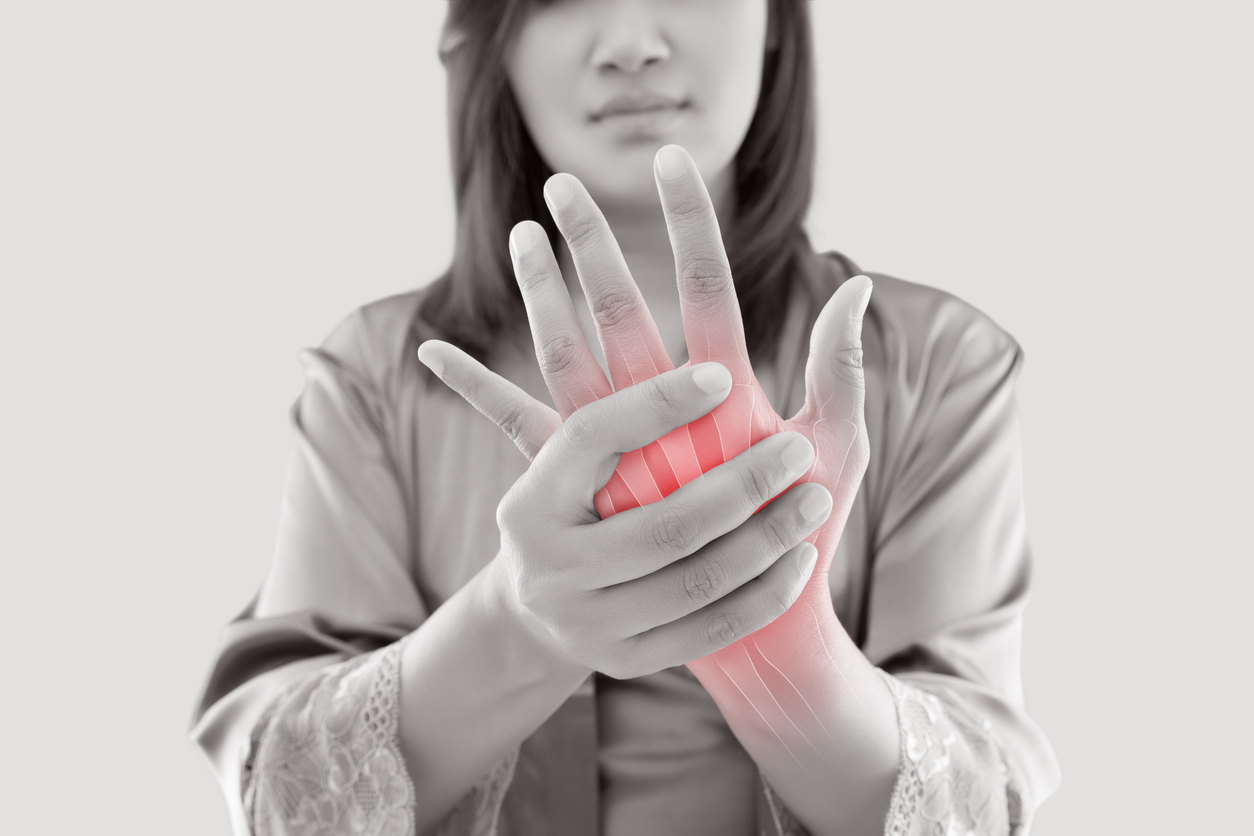
Stenosing Tenosynovitis, commonly known as “trigger finger,” is a condition that most often affects the ring finger and thumb causing pain, stiffness, and a sensation of catching when you bend and straighten your finger. Don’t panic, there is hope! The orthopedic specialists at the Orthopedic Specialty Institute can provide Relief for Trigger Finger.
In order to understand how this condition affects people, let’s consider the anatomy of the hand. Long cord-like “flexor tendons” attach the finger bones to the muscles of the forearm. When muscles contract, these tendons allow the fingers to bend. In order to glide smoothly as the finger moves, the flexor tendons pass through tunnels in the palm known as “tendon sheaths.” Bands of tissues known as pulleys hold the finger tendons close to the finger bones, and it is one of these pulleys, the A1 pulley, that is usually involved in the condition known as trigger finger.
When patients experience trigger finger, this A1 pulley, located near the opening of the tendon sheath, becomes inflamed or thickened making it difficult for the flexor tendon to glide through as the finger bends.
Symptoms can include:
- A feeling of catching, popping, or locking with finger movement
- Pain with bending or straightening
- Soreness or a tender lump at the base of the finger on the palm side of the hand
- In severe cases the finger can become locked in a bent position
Although a cause has not specifically been identified, some factors can increase your risk for developing the condition such as:
- People who have diabetes or rheumatoid arthritis
- Forceful use of the fingers and thumb
Treatments for trigger finger begin with non-surgical interventions such as rest, splinting, exercises, and over the counter nonsteroidal anti-inflammatory drugs (NSAIDs). Another minimally invasive treatment is injecting the anti-inflammatory agent cortisone into the tendon sheath at the base of the trigger finger. This may resolve the issue over a period of a few days to several weeks. A second injection can be given within a few weeks, but if these do not provide relief, then it may be time to consider surgery.
The decision for this elective surgery, known as tenolysis, is likely based on how painful or debilitating the case of trigger finger is. The goal of this procedure is to release the A1 pulley that is blocking tendon movement allowing the flexor tendon to glide more easily.
Usually performed in an outpatient setting using local anesthesia to numb the area, tenolysis involves making a small incision in the palm and then releasing the troublesome pulley.
If you are suffering from trigger finger, you don’t need to suffer anymore. Get in touch with the orthopedic specialists at the Orthopedic Specialty Institute of Fort Lauderdale today to speak about Relief for Trigger Finger.
